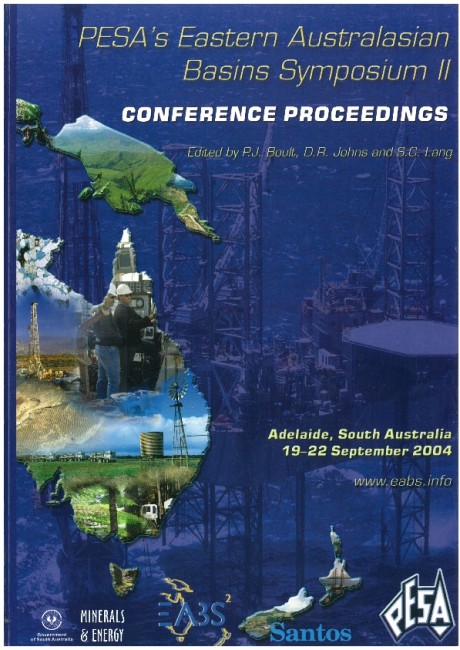Publication Name: PESA's Eastern Australasian Basin Symposium II
Authors: P.J. Boult and L. Rankin
Date Published: December 2004
Number of Pages: 29
Reference Type: Book Section
Abstract:
The eastern Officer Basin has the potential to contain several very large oil fields. Oil shows are common, reservoirs are proven, and abundant salt implies long-term preservation is feasible. This study has identified a new hydrocarbon play. In particular, horst and graben structures which are capped by stable salt in an ideal location for receiving oil which migrated out of the Munyarai Trough.Major depocentres, which contain up to 10 km of sediment, are associated with three extensional events. The most significant depocentre was developed to the northeast of the Birksgate-Coober Pedy structural corridor (BCPC). Regional transpressive deformation also appears to be confined to the northeast of the BCPC.
Hydrocarbon maturation and generation in the Munyarai Trough has charged structures in the Marla area (Sector 5) and is responsible for numerous oil shows seen in drill cores there. The majority of exploration effort has been concentrated in the Marla area over the past three decades, but unfortunately the repeated compressive to transpressive deformation in Sector 5 may have breached any large-scale entrapment of oil. However, oil that migrated out of the Munyarai Trough on to the Murnaroo Platform (Sector l) to the southwest of the BCPC would have had a significantly greater chance of preservation.
Prospective plays for long term preservation in the Officer Basin are:
1. Within lower Neoproterozoic (Willouran) salt diapir related traps
2. Beneath undisturbed massive salt horizons within the Callana Group, draped over basement horsts
3. Beneath evaporite rich shales and salt at the base of the Cambrian section.


